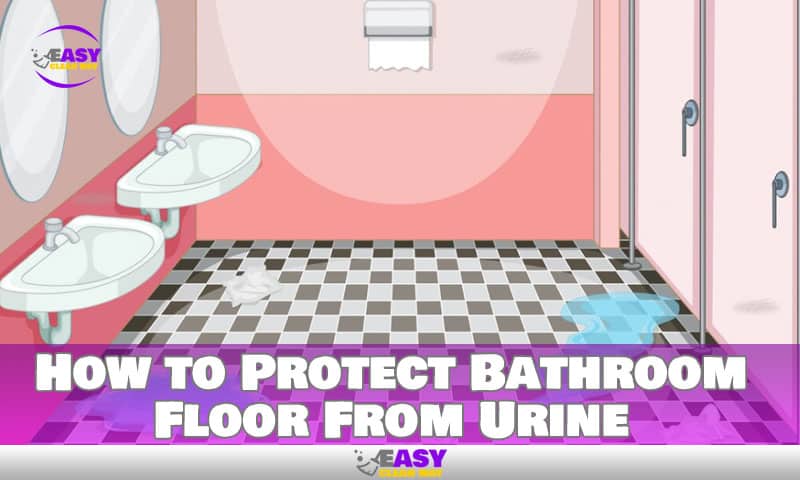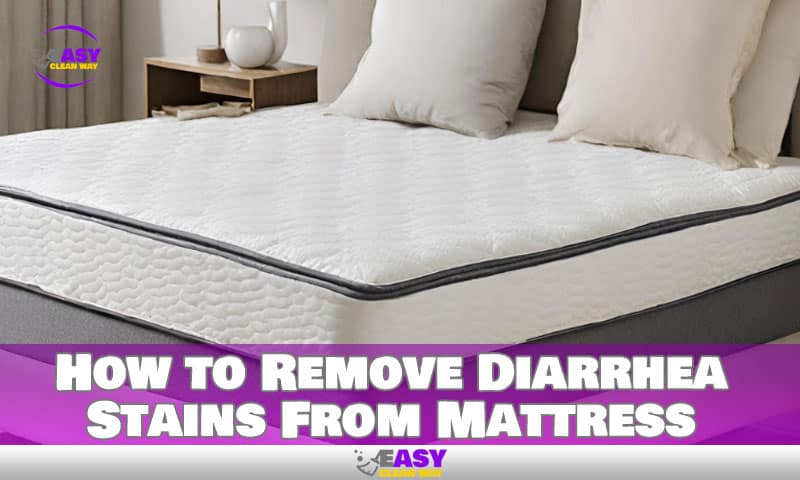To clean poly furniture, first, remove any debris or dirt from the surface. Then, mix a mild detergent with warm water and scrub the furniture using a soft brush or cloth.
Understanding Poly Furniture
Poly furniture is a type of outdoor furniture made from recycled plastic materials. It is a popular choice among homeowners and businesses due to its durability, low maintenance requirements, and eco-friendly nature. Understanding the benefits and characteristics of poly furniture can help you make an informed decision when it comes to purchasing and caring for these pieces.
Some key points to know about poly furniture include:
- Durability: Poly furniture is known for its exceptional durability. It is resistant to fading, cracking, peeling, and rotting, making it ideal for outdoor use. This furniture can withstand various weather conditions, including extreme heat, rain, and snow, without losing its original color or shape.
- Eco-friendly: Poly furniture is made from recycled plastic materials, typically sourced from milk jugs, detergent bottles, and other plastic containers. By choosing poly furniture, you are contributing to the reduction of waste in landfills and the preservation of natural resources.
- Low maintenance: Unlike wood furniture, which requires regular staining and sealing, poly furniture is virtually maintenance-free. It does not require painting, waterproofing, or special care to maintain its appearance and structural integrity. Cleaning poly furniture is simple and straightforward, as explained in the rest of this blog post.
Common Types Of Poly Furniture
Poly furniture comes in various types and styles, allowing you to find the perfect pieces that match your outdoor aesthetic. Some common types of poly furniture include:
- Adirondack chairs: These classic outdoor chairs have wide armrests and a slanted back, providing exceptional comfort. They are available in a variety of colors and designs, allowing you to customize your outdoor seating arrangement.
- Dining sets: Poly furniture dining sets are perfect for outdoor gatherings and meals. They typically consist of a table and matching chairs, offering both functionality and style.
- Benches: Poly benches are a versatile seating option that can be placed in gardens, patios, or by the poolside. They come in different sizes and designs, providing a comfortable and durable seating solution.
- Swings and gliders: For a touch of relaxation and nostalgia, poly swings and gliders are an excellent choice. These pieces offer a soothing rocking motion and are available in single or double-seat options.
Why Proper Cleaning Is Essential For Maintaining Poly Furniture
Proper cleaning is crucial for maintaining the longevity and appearance of your poly furniture. Regular cleaning helps to remove dirt, debris, and stains, ensuring that your furniture stays in excellent condition for years to come.
Here are some reasons why proper cleaning is essential:
- Prolongs lifespan: By removing dirt and grime, you prevent the build-up of mold, mildew, and other harmful substances that can degrade the integrity of your poly furniture. Regular cleaning extends the lifespan of your furniture, saving you money in the long run.
- Enhances appearance: Poly furniture can accumulate stains from outdoor elements, such as bird droppings, pollen, and food spills. Proper cleaning eliminates these stains, restoring the furniture’s original color and enhancing its overall appearance.
- Prevents odors: Without regular cleaning, poly furniture may develop unpleasant odors due to the presence of organic matter or trapped moisture. Cleaning helps eliminate these odors, ensuring that your outdoor space remains fresh and inviting.
- Maintains functionality: Keeping your poly furniture clean ensures that it remains functional and safe to use. Regular cleaning removes debris that can cause scratches, stickiness, or other issues that may compromise the usability of the furniture.
Now that we have a basic understanding of poly furniture and its benefits, let’s dive into the specifics of how to clean and maintain this type of furniture.
The Ultimate Guide To Cleaning Poly Furniture

Poly furniture, also known as polyethylene furniture, is a popular choice for outdoor settings due to its durability and resistance to weather elements. However, like any other type of furniture, it requires regular cleaning to maintain its appearance and extend its lifespan.
In this ultimate guide, we will go over important safety precautions, gather the necessary cleaning supplies and equipment, and assess the condition of your poly furniture to ensure effective cleaning and maintenance.
Important Safety Precautions
When cleaning poly furniture, it is crucial to prioritize safety to prevent any accidents or damage. Keep the following safety precautions in mind:
- Wear protective gloves to protect your hands from any cleaning agents or potential sharp edges on the furniture.
- Mix cleaning solutions according to the manufacturer’s instructions, and avoid using harsh chemicals or abrasive cleaners that may damage the surface of the poly furniture.
- Work in a well-ventilated area to minimize exposure to any fumes from cleaning products.
- Avoid using high-pressure washers, as they can cause the surfaces of the poly furniture to become rough or scratched.
- Before starting the cleaning process, ensure the area is clear of any obstacles to prevent tripping or accidents.
Gather The Necessary Cleaning Supplies And Equipment
To effectively clean your poly furniture, it is essential to have the right tools and cleaning agents on hand. Here is a list of supplies and equipment you will need:
- Soft-bristle brush or sponge: Use a gentle brush or sponge to remove any dirt, debris, or stains from the poly furniture without causing scratches.
- Mild dish soap: Create a mixture of mild dish soap and warm water to use as a general cleaning solution for your poly furniture.
- White vinegar: Vinegar can be used as an alternative cleaning agent for tougher stains or mold and mildew.
- Bucket or spray bottle: Depending on your preference, use a bucket to mix cleaning solutions or a spray bottle for convenient application.
- Garden hose: A garden hose with a nozzle attachment can be used to rinse off the cleaning solution and remove any residue effectively.
- Microfiber cloth or towel: Use a soft microfiber cloth or towel to dry the poly furniture after cleaning, leaving no streaks or water spots.
Now that you have gathered all the necessary supplies and equipment, let’s move on to assessing the condition of your poly furniture before starting the cleaning process.
Cleaning Hacks For Poly Furniture
Poly furniture is a popular choice for outdoor spaces due to its durability and low maintenance. However, regular cleaning is still necessary to keep it looking its best. Here are some effective cleaning hacks for poly furniture:
Removing Surface Dirt And Debris
- Brushing off loose dirt and dust: Use a soft-bristle brush to gently sweep away any loose dirt or dust from the surface of the poly furniture.
- Using a damp cloth for gentle cleaning: Dampen a cloth with water and wipe down the furniture to remove any remaining dirt or debris.
Cleaning Tough Stains And Spills
- DIY cleaning solutions for specific stains: For stains like bird droppings or food spills, create a mixture of mild dish soap and warm water. Apply the solution to the affected area and scrub gently with a brush or sponge. Rinse thoroughly with water.
- Steps for removing mold and mildew stains: Mix equal parts of vinegar and water in a spray bottle. Spray the solution onto the mold or mildew stains and let it sit for a few minutes. Scrub the area gently with a brush and rinse with water.
Dealing With Grime And Grease
- Using dish soap and warm water to cut through grease: If your poly furniture has grease stains, mix a small amount of dish soap with warm water. Apply the solution to the affected area and scrub gently with a brush or sponge. Rinse thoroughly with water.
- Gentle scrubbing techniques for removing grime: For stubborn grime, use a soft brush or sponge to scrub the affected area in a circular motion. Rinse with water after scrubbing.
Preventing And Removing Sun Damage
- Protecting poly furniture from UV rays: Apply a UV protectant coating to your poly furniture to prevent sun damage. Follow the instructions on the product for proper application.
- Restoring faded or discolored poly furniture: To restore color to faded or discolored poly furniture, use a specialized poly furniture restorer. Apply the restorer according to the product instructions and buff the furniture with a clean cloth.
Remember to always test any cleaning solution or product in a small, inconspicuous area before applying it to the entire piece of furniture. Regular cleaning and maintenance will help extend the lifespan of your poly furniture, keeping it looking beautiful for years to come.
Tips For Maintaining Poly Furniture

Poly furniture is a popular choice for outdoor spaces due to its durability, low maintenance, and resistance to the elements. To ensure that your poly furniture stays in top condition and lasts for years to come, follow these essential tips for maintaining poly furniture.
Regular Maintenance Routine
- Regularly inspect your poly furniture for any signs of dirt, stains, or mildew.
- Clean your poly furniture regularly to prevent dirt and grime buildup.
- Wipe off spills immediately to avoid staining the surface.
- Remove any debris or leaves from crevices and corners.
Frequency Of Cleaning And Maintenance
- Clean your poly furniture at least twice a year, preferably in spring and fall.
- Increase the frequency of cleaning if you live in an area with heavy rainfall or high humidity.
- Consider spot cleaning as needed to address immediate spills or stains.
Seasonal Care For Poly Furniture
- During the summer months, when the furniture is in frequent use, wipe it down regularly with a damp cloth to remove sweat and sunscreen residue.
- Apply a protective coat of UV-resistant sealant or wax every six months to prevent fading and damage from sun exposure.
Storing Poly Furniture During Winter Or Extended Periods Of Non-Use
- Before storing your poly furniture, thoroughly clean and dry it.
- Disassemble the furniture if possible to save space and prevent damage during storage.
- Store the furniture in a dry, well-ventilated area away from extreme temperatures.
Proper Cleaning And Preparation Before Storage
- Use a mild soap and water solution to clean the furniture, avoiding harsh chemicals or abrasive cleaners.
- Gently scrub the surface with a soft brush or sponge to remove any dirt or stains.
- Rinse thoroughly with clean water and allow it to dry completely before storing.
Storing Poly Furniture To Prevent Damage
- Use furniture covers or tarps to protect your poly furniture from dust, moisture, and pests during storage.
- Elevate the furniture off the ground to prevent contact with damp surfaces.
- Avoid stacking heavy items on top of stored furniture to prevent distortion or damage.
Maintaining poly furniture is relatively simple and requires regular cleaning, seasonal care, and proper storage. By following these tips, you can keep your poly furniture looking its best and extend its lifespan for years of outdoor enjoyment.
Troubleshooting Common Issues
Poly furniture is known for its durability and low maintenance, but like any other material, it may encounter some common issues over time. From scratches and surface damage to structural issues, understanding how to troubleshoot these problems can help you keep your poly furniture looking its best.
Repairing Scratches And Surface Damage
Poly furniture is resistant to scratches and stains, but even the toughest materials can show signs of wear and tear. Here are some tips to repair scratches and surface damage on your poly furniture:
- Use a soft cloth or sponge and mild soap to clean the affected area.
- If the scratch is minor, you can try using a heat gun or hairdryer to heat the area and make the scratch less visible.
- For deeper scratches or gouges, you can use fine-grit sandpaper to gently sand the surface until the scratch is no longer noticeable.
- Apply a matching color of touch-up paint to the affected area with a small brush or sponge to blend it with the surrounding surface.
Tools And Techniques For Repairing Poly Furniture
When it comes to repairing poly furniture, having the right tools and techniques can make the process easier and more effective. Here are some essential tools and techniques you can use:
- Sandpaper: Choose fine-grit sandpaper (around 220 grit) to smooth out scratches or surface imperfections.
- Heat gun or hairdryer: Use heat to soften the poly material and make it easier to repair minor scratches or dents.
- Matching color touch-up paint: Look for touch-up paint that matches the color of your poly furniture to ensure seamless repairs.
- Soft cloth or sponge: Use a gentle cleaning solution and a soft cloth or sponge to clean the furniture before and after repairs.
Steps To Seamlessly Blend Repairs With The Original Finish
To ensure that your repairs seamlessly blend with the original finish of your poly furniture, follow these steps:
- Clean the area around the repair using a soft cloth or sponge and mild soap.
- Use sandpaper to gently smooth the surface around the repair area, making sure it is level with the rest of the furniture.
- Apply the matching color touch-up paint to the repair area, following the manufacturer’s instructions.
- Allow the touch-up paint to dry completely before using the furniture.
- If necessary, you can lightly sand the repaired area and apply another coat of touch-up paint to achieve a perfect match.
Dealing With Structural Issues
Although polymer furniture is generally sturdy, it can develop structural issues such as loose joints or cracked pieces. Here’s how to address these problems:
- Inspect your furniture regularly for any signs of structural damage, such as wobbling or creaking.
- Tighten loose joints using a screwdriver or Allen wrench. If the joint is severely damaged, you may need to replace the fastener or seek professional help.
- For cracked pieces, use a poly-specific adhesive to bond the broken parts together. Make sure to follow the adhesive manufacturer’s instructions for proper application and drying time.
- If the damage is beyond repair, consider replacing the affected piece or seeking professional assistance.
Identifying And Fixing Loose Joints Or Cracked Pieces
Loose joints and cracked pieces can negatively affect the stability and functionality of your poly furniture. Here’s a step-by-step guide to identifying and fixing these issues:
- Check for any wobbling or movement in the furniture joints. Tightening loose screws or fasteners can often solve the problem.
- If the joint is still loose, try applying a wood glue specifically designed for poly furniture. Apply the glue to the joint, then clamp or hold the joint firmly until the glue dries.
- For cracked pieces, use a poly-specific adhesive to bond the broken parts together. Apply the adhesive evenly and press the pieces firmly together. Allow sufficient drying time before use.
Seeking Professional Help When Necessary
While many poly furniture issues can be resolved on your own, some problems may require professional help. If you encounter any of the following situations, it’s best to seek assistance from an experienced technician:
- Severe structural damage that is beyond your repair abilities.
- Extensive surface damage or deep scratches that cannot be fixed with touch-up paint or sanding.
- Complicated repairs that involve intricate parts or complex assemblies.
- Lack of confidence or knowledge to perform the necessary repairs yourself.
Remember, proper care, maintenance, and timely repairs can prolong the lifespan of your poly furniture and keep it looking as good as new. By troubleshooting common issues and addressing them promptly, you can enjoy your poly furniture for years to come.
FAQs
How Do You Clean Poly Furniture?
To clean poly furniture, simply wipe it down with a mixture of mild soap and water. Rinse thoroughly and dry.
Can You Use Bleach On Poly Furniture?
No, bleach is not recommended for cleaning poly furniture, as it can cause discoloration and damage to the material.
What Is The Best Way To Remove Stains From Poly Furniture?
To remove stains from poly furniture, use a mixture of vinegar and water. Scrub gently and rinse thoroughly with clean water.
How Often Should You Clean Poly Furniture?
It is recommended to clean poly furniture at least once a month to prevent the buildup of dirt and maintain its appearance.
Conclusion
Maintaining the cleanliness of your poly furniture is essential to ensuring its longevity and aesthetics. By following a few simple steps, you can keep your furniture looking pristine for years to come. Regularly dusting and washing your poly furniture will help remove dirt and grime buildup.
A mild detergent and warm water solution can be used for deeper cleaning, while a soft brush will help remove stubborn stains. Remember to rinse the furniture thoroughly to remove any residue. Applying a protective coating or wax after cleaning will help maintain the vibrancy of the furniture and protect it from the elements.
By taking the time to properly clean and care for your poly furniture, you can enjoy its beauty and functionality for many seasons ahead. So, go ahead and give your poly furniture the TLC it deserves, and it will continue to enhance your outdoor spaces for years to come.
Hey there! I’m Wilfred Holguin, your Home Clean Expert blogger. I’m on a quest to help you conquer the clutter in your home and embrace the joys of a tidy home.





